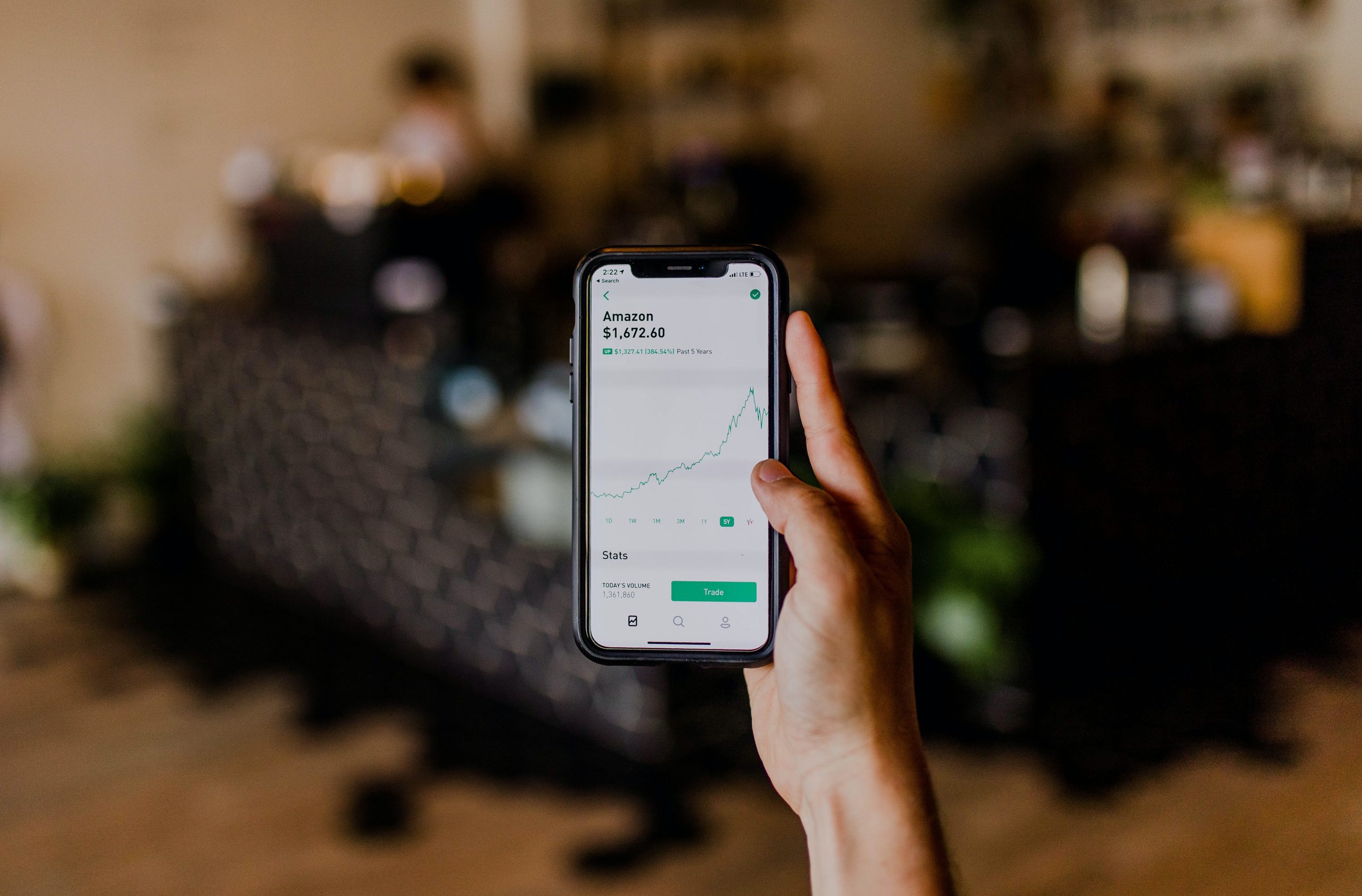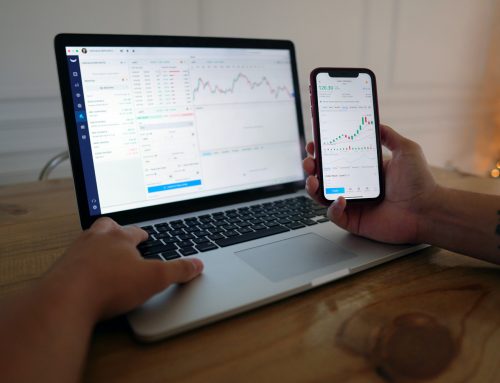When it comes to the investors who prefer active trading over passive management, there are typically two main strategies they can implement: swing trading vs day trading. Both providing ways for investors to make money off of market volatility, traders may utilize elements of both swing trading and day trading strategies in their portfolios, though many will show a preference for one over the other.
Compared to traditional investing, both swing and day trading are not being done with the intention to buy and hold stocks over the long run. Rather, investors seek to capitalize on short term price movement. But, while they both operate on the same principles of making money from short-term stock movements, the two strategies differ in some key ways.
So what is swing trading vs day trading, how are these strategies different and how can you decide whether swing vs day trading is right for you? Continue reading as we dive into each of these strategies in more detail.
Featured Courses:
What Is The Swing Trading vs Day Trading Debate?
When it comes to the day vs swing trading debate, people often want to know which strategy will be most profitable for them and make them the most money. However, there are additional points that many seasoned traders also like to consider. These include which strategy is safer when comparing swing vs day trading, and which one will be less time-consuming.
Similar to the long-standing debate among investors between value investing vs growth investing, many times the verdict will come down to personal preference and industry knowledge. However, that doesn’t mean each strategy comes without its own benefits and drawbacks.
Thus, in this guide, we’ll get more granular with each of these strategies. We’ll answer the big question that many want to know–swing trading vs day trading – which is more profitable? But, we’ll also factor in other aspects of trading that matter to you – like risk, time commitment, etc.
What Is The Difference Between Swing Trading vs Day Trading?
You may be wondering what exactly are the major differences between day vs swing trading, and how these two short-term investment strategies are unique. But before we can begin to compare the two, we need to provide some clarity around each strategy so we can see what really differentiates them.
What Is Swing Trading?
Let’s begin with a deep dive into swing trading for those who are wondering what is swing trading and how does it work. At its core, swing trading is a short-term market strategy based on the swings in various securities like equities, commodities, and currencies that occur over days or weeks. It is a commonly used strategy that helps investors make money off of short-term volatility and movements in the market.
Just like with any other investment strategy, swing trading has its pros and cons, though it can still be a highly profitable investment strategy when implemented correctly. Investors can utilize other strategies alongside swing trading, like setting stop-losses, so they don’t have to be glued to their screens at all times in case an attractive exit or entry point appears in the market.
Many investors like swing trading because it can be largely automated and set up ahead of time so the trades are made when securities hit a certain price point. Plus, given that the market swings in question can become larger with the more days that pass, there can be potential for higher returns when utilizing a swing trading strategy, even if that means keeping the capital tied up in a position for longer.
If you want to learn more about swing trading and how you can begin implementing this strategy for yourself, take a look at our Swing Trading Guide for Beginners.
What Is Day Trading?
Now we can take a deeper look at day trading. As you may be able to gather from the name alone, day trading is a strategy that requires investors to enter a number of trades in one single day. With day trading, investors rarely will own securities overnight, taking small profits at the end of each day or cutting off losses.
In addition, day trading is typically done to generate regular income for the trader and can even become a full-time career. Plus, it’s a fast-paced investment strategy that many investors have come to love and can’t find anywhere else. With this, though, comes higher risk exposure.
Day trading generally requires investors to be diligently in front of their computer screens each day in order to spot the right entry or exit point. Thus, this strategy is highly reliant on technical analysis and software systems that can help detect patterns and identify opportunities. Because of this, day trading can be quite capital intensive. Not just with the capital needed to enter positions, but to complete the whole set-up with state-of-the-art technology and systems.
Swing Trading vs Day Trading: Which Is Right For You?
Now that we’ve answered, what is swing trading vs day trading, we can take a look at the two of them together and see how they compare. While each strategy has its own set of pros and cons, they each shine in their own regards.
So let’s take a look at how day vs swing trading stack up against each other when it comes to profitability, the time commitment, and the risk involved:
Swing Trading vs Day Trading – Which Is More Profitable?
When considering swing trading vs day trading – which is more profitable – you can be certain that each strategy has its own manner of making money, you just need to decide which route you’re better equipped for.
Swing trading can occur over a few weeks or days, meaning there is more time for the price swings to soar even higher for investors to realize larger gains. On the other hand, day traders are entering and exiting positions throughout the day, so they are able to stack up small profits together rather than waiting for a few large swings to realize.
Even still, many will argue that day trading has the potential to be more profitable than swing trading because of the large volume of trades that can be executed each day. However, this doesn’t mean that day trading always ends up being more profitable, though there tends to be a greater opportunity when utilizing this strategy.
At the end of the day, the two strategies can be summarized like this: day traders make more frequent, but smaller trades, while swing traders make fewer, but larger trades. Both strategies require precise timing utilizing the right tools. Both can be profitable given the trader’s experience, knowledge levels, and willingness to monitor the markets.
Swing vs Day Trading – Which Requires More Time?
Based on the nature of the strategy, swing trading can require a longer timeline than day trading, since it’s based on the swings in the market that can last days or even weeks.
However, day trading can be a lot more time-consuming day to day, because investors need to be glued to their screens and monitor their software systems in order to time the markets right and make profitable trades.
Given these factors, many day traders do so as a full-time position. Meanwhile, swing traders are able to profitably utilize this strategy while doing it on the side and maintaining their regular 9-5 jobs. So, it’s generally understood that day trading is a bigger time commitment than swing trading. One requires at least a few hours a week while the other requires at least a few hours a day.
Swing vs Day Trading – Which Is Riskier?
It’s important to mention that there are risks associated with each type of investment strategy–whether short-term or long-term. However, the nature of short-term strategies provides its own unique set of risks.
When comparing the riskiness of day vs swing trading, the truth is they both provide risk exposure to investors. But, they also both come with sizable rewards. Since swing traders implement their strategy over days and weeks, the opportunity for higher gains is present, but the possibility of greater losses is as well.
Similarly, since day traders make smaller trades each day on smaller price movements, they may face less risk day to day than swing traders are subject to. Even still, with a greater volume of trades, the smaller losses can add up pretty quickly in just one day.
Just like when we discussed the profitability potential for day vs swing trading, the risk involved with each of these strategies is similar, in that it is highly related to the skill of the trader and their willingness to monitor the markets.
Day Trading vs Swing Trading: The Verdict
So when it comes down to swing trading vs day trading – which is more profitable – we can see that each strategy has its own pros and cons, but they each might be better suited for certain people and certain scenarios.
- Swing Trading: Better suited for those who want to make money off of short-term moves in the markets, but don’t necessarily want to be glued to their screens in order to do so. It isn’t as fast-paced and adrenaline-inducing as day trading, though it can still be a profitable short-term investment strategy.
- Day Trading: Should be utilized by those who want to make it a full-time position and devote their attention to it day in and day out. Day trading requires a sizable investment up front to get started with the equipment, trading platforms, and more.
In either case, you need to stay informed on the markets and utilize the proper tools when implementing a short-term trading strategy like day trading or swing trading. These are both strategies that require both high-level and in-depth knowledge of the markets in order to time trades correctly and identify potentially profitable positions, which you can’t recognize all on your own.
Thus, finding the right tools can be instrumental in making your short-term trading strategies profitable and effective–no matter if you’re using day vs swing trading.
No Matter How You Trade, Invest In Yourself With VectorVest
The truth is that there is no better strategy when comparing day trading to swing trading. Each investment philosophy comes with its own benefits and drawbacks, so investors should assess some of the points laid out here about which strategy requires more time, is riskier, and provides the most reward in order to choose the route that’s best for them.
Plus, a lot of the success that can come from either of these strategies depends on the personal expertise and knowledge of the trader, and their willingness to watch for short-term indicators and opportunities in the markets. So regardless of which strategy you choose to utilize, you cannot underestimate the advantage of having the right tools at your fingertips that can help you maximize profits while capping losses.
With VectorVest, you are always able to access clear recommendations on what to buy, and when you should buy it. Especially when implementing a short-term strategy like day or swing trading, there is no room for guessing or small errors–you need clear and accurate information, quickly. You also need to be emotionless when investing. No other software can provide you with such world-class stock analysis and forecasting, and can provide you with a straightforward way to make money in the markets.
Check out VectorVest today – our stock forecasting tools take the complexity out of the investing so you can make the most out of your time in front of the screen. Want a sneak peek into what our software can do for you? Take a look at our free stock analyzer today!








Leave A Comment